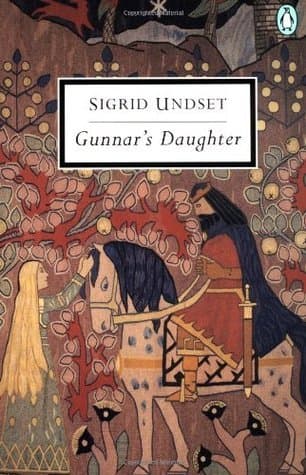
Book Review Summary: Gunnar's Daughter
Introduction
"Gunnar's Daughter" by Sigrid Undset is a historical novel set in Norway and Iceland during the eleventh century. It tells the story of Vigdis Gunnarsdatter, a beautiful and headstrong young woman who faces a tragic event that changes her life forever. The novel explores themes of rape, revenge, civil and domestic violence, and the challenges of raising a child conceived in violence. With its skillful blend of historical accuracy and timeless themes, "Gunnar's Daughter" has captured the imagination of readers worldwide.
About Sigrid Undset
Sigrid Undset, the author of "Gunnar's Daughter," was a Danish-Norwegian writer who won the Nobel Prize for Literature in 1928. Born in Kalundborg, Denmark, Undset moved to Norway with her family at the age of two. She converted to Catholicism and became a lay Dominican in 1924. Undset fled Norway in 1940 due to her opposition to Nazi Germany and the German occupation, but returned after the end of World War II in 1945.
Analysis of Views
-
Historical accuracy: Readers praise Undset's ability to accurately portray the historical setting of the novel. The blending of historical events, cultural traditions, and daily life in Norway and Iceland during the eleventh century creates a vivid and immersive reading experience.
-
Timeless themes: The novel explores universal themes that resonate with readers today. Themes such as rape, revenge, and the challenges of relationships have been widely discussed by readers, highlighting Undset's skill in addressing timeless issues.
-
Strong female characters: Vigdis Gunnarsdatter is a particularly strong and independent female character who challenges societal norms. Readers appreciate her courage and intelligence, as well as her ability to overcome adversity and rebuild her life.
-
Engaging plot: The plot of "Gunnar's Daughter" is engaging and keeps readers on the edge of their seats. The twists and turns in the story create a sense of anticipation and suspense, making it difficult for readers to put the book down.
-
Beautiful writing: Undset's writing style is often described as beautiful, evocative, and poetic. Readers appreciate the way she conveys emotion and captures the essence of the characters and their experiences.
Reasons for Recommendation
-
Historical accuracy: The historical setting provides readers with a unique perspective on a lesser-known period of history. The attention to detail and accuracy in portraying the cultural and social aspects of the time enhance the reading experience.
-
Timeless themes: The exploration of universal themes such as rape, revenge, and relationships makes "Gunnar's Daughter" relevant to readers from different backgrounds and time periods. The novel offers insights into human nature and provides a thought-provoking reading experience.
-
Strong female characters: Vigdis Gunnarsdatter's character serves as an inspiration to readers who appreciate strong, independent women. Her resilience and determination in the face of adversity make her a memorable and relatable protagonist.
-
Engaging plot: The plot is well-crafted, keeping readers engaged from start to finish. The twists and turns add suspense and keep readers on the edge of their seats, making it difficult to put the book down.
-
Beautiful writing: Undset's writing style is praised for its poetic quality and ability to evoke emotion. Her words transport readers into the world of the novel, allowing them to experience the characters' struggles and triumphs alongside them.
Conclusion
"Gunnar's Daughter" by Sigrid Undset is a compelling historical novel that explores timeless themes through its portrayal of strong female characters and engaging plot. With its accurate depiction of historical settings and its exploration of universal issues, the book has captured the hearts of readers worldwide. Undset's beautiful writing style adds depth and emotion to the reading experience, making "Gunnar's Daughter" a must-read for those interested in historical fiction or seeking a thought-provoking read.